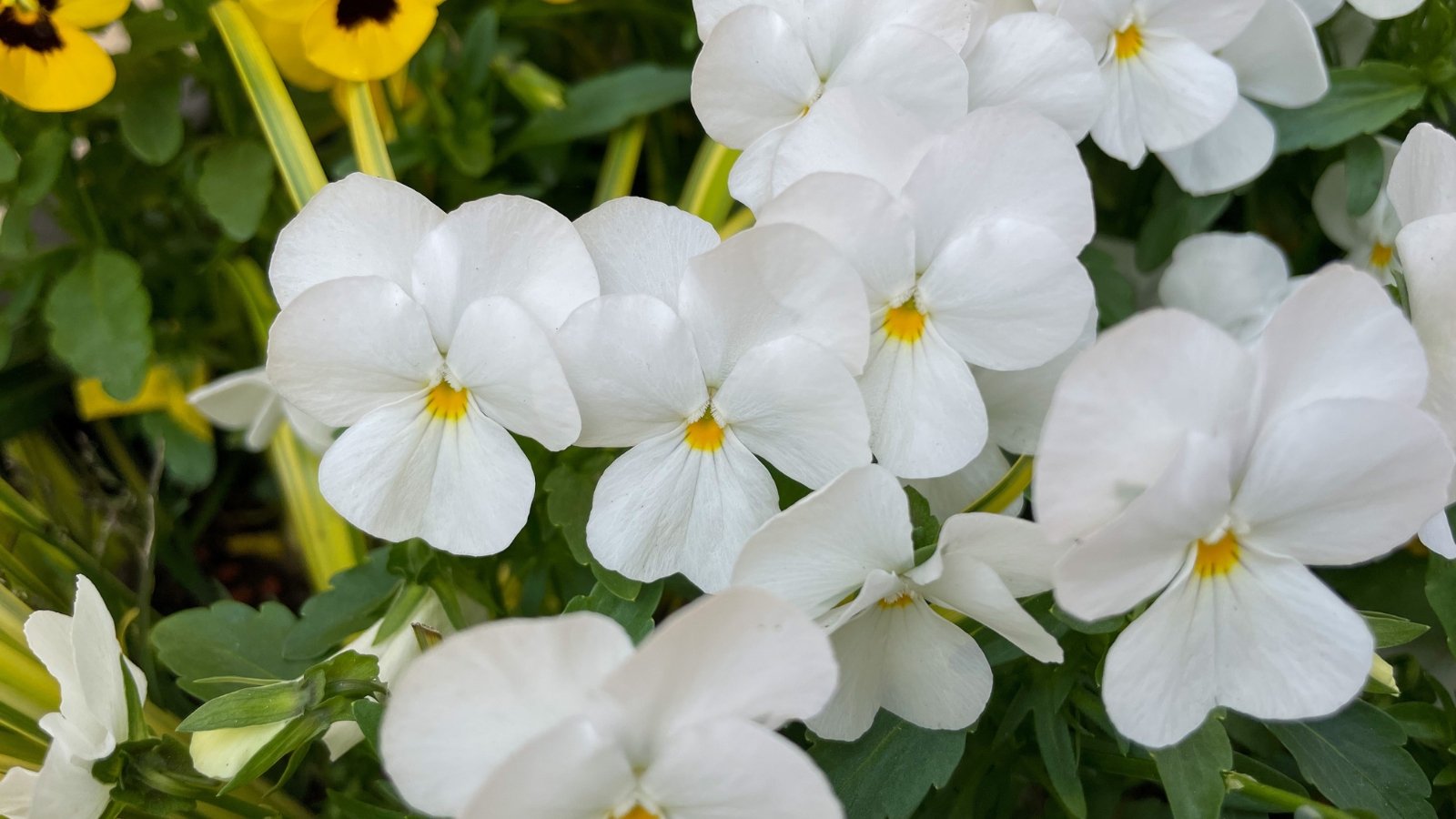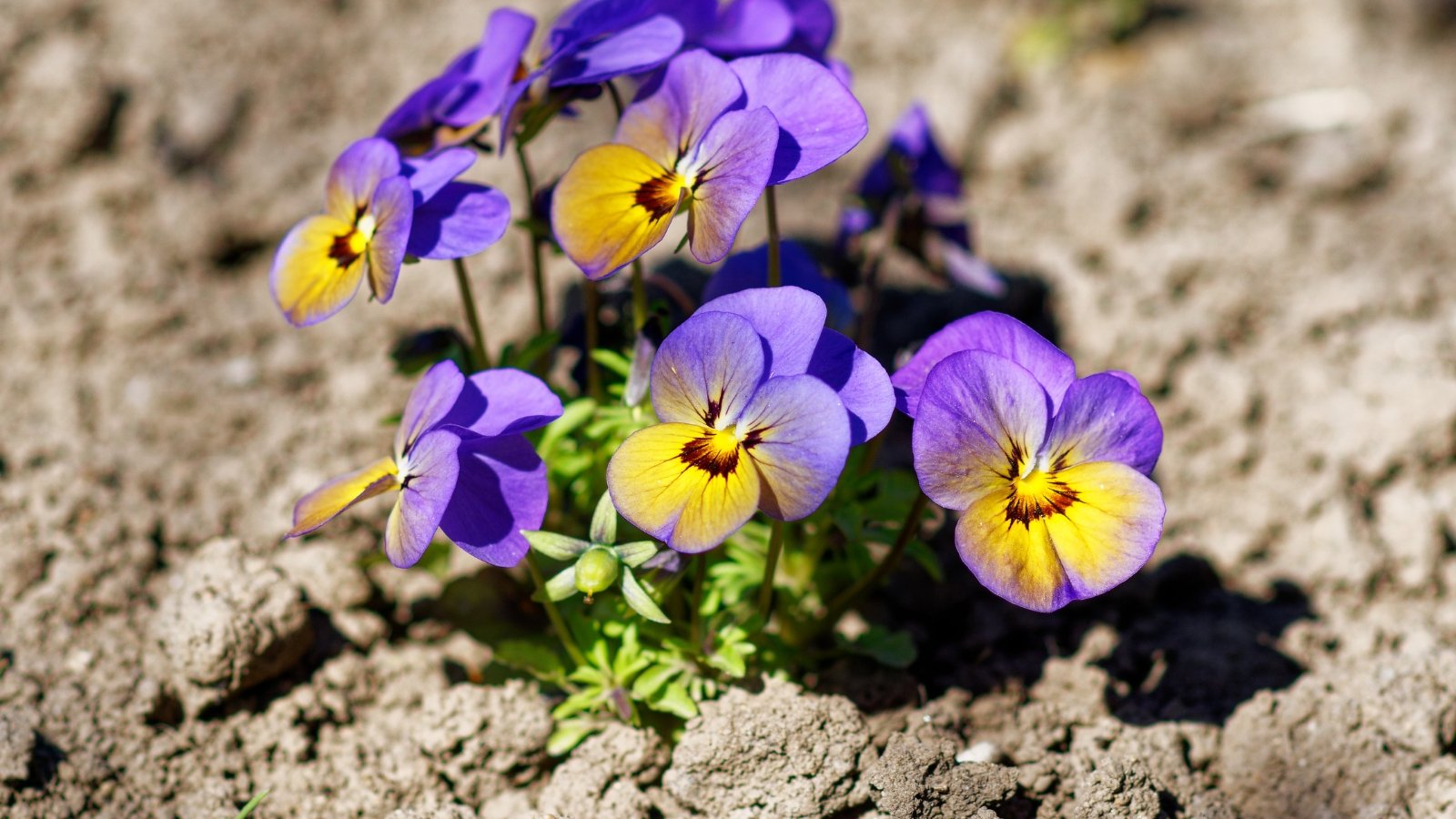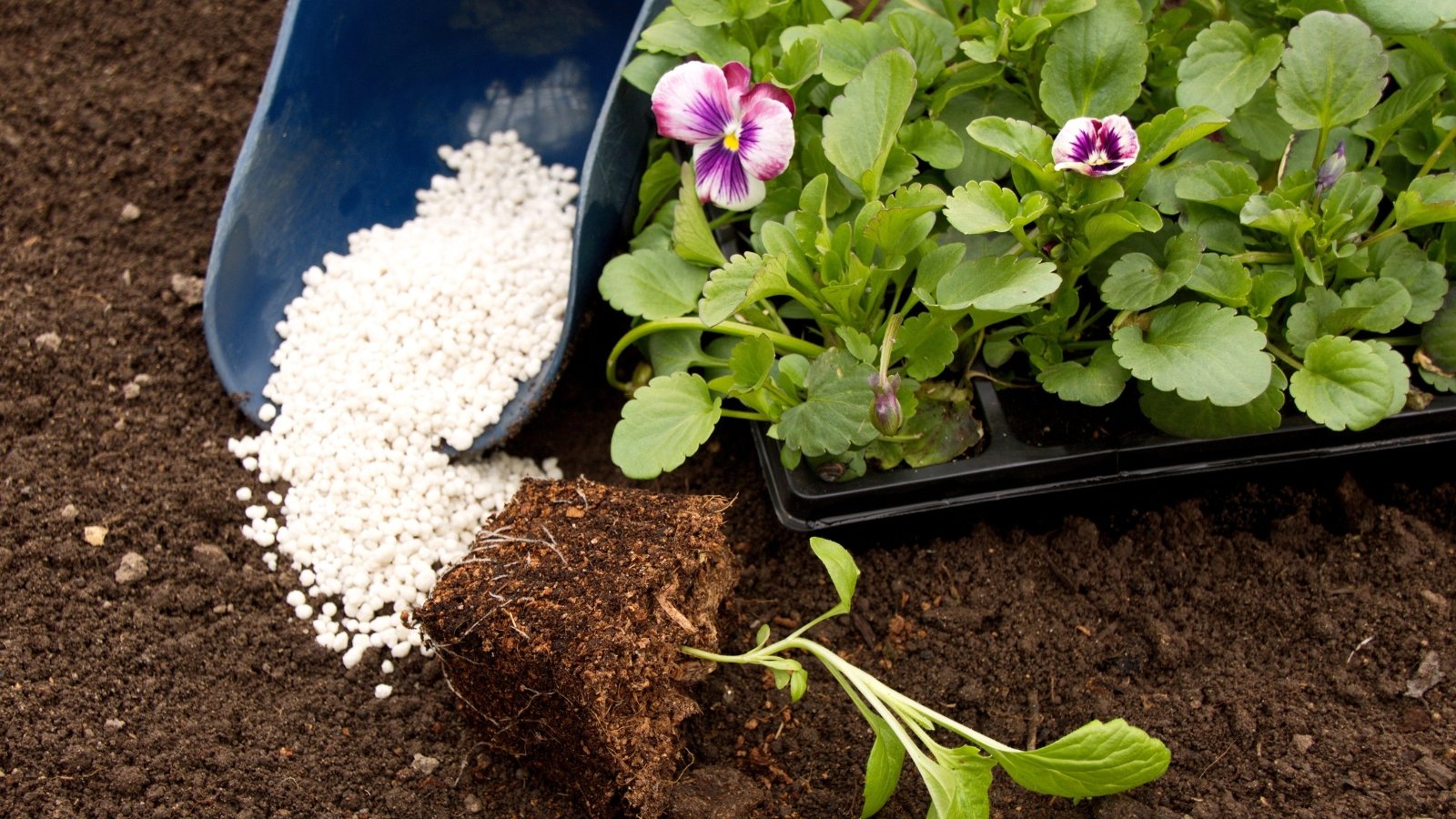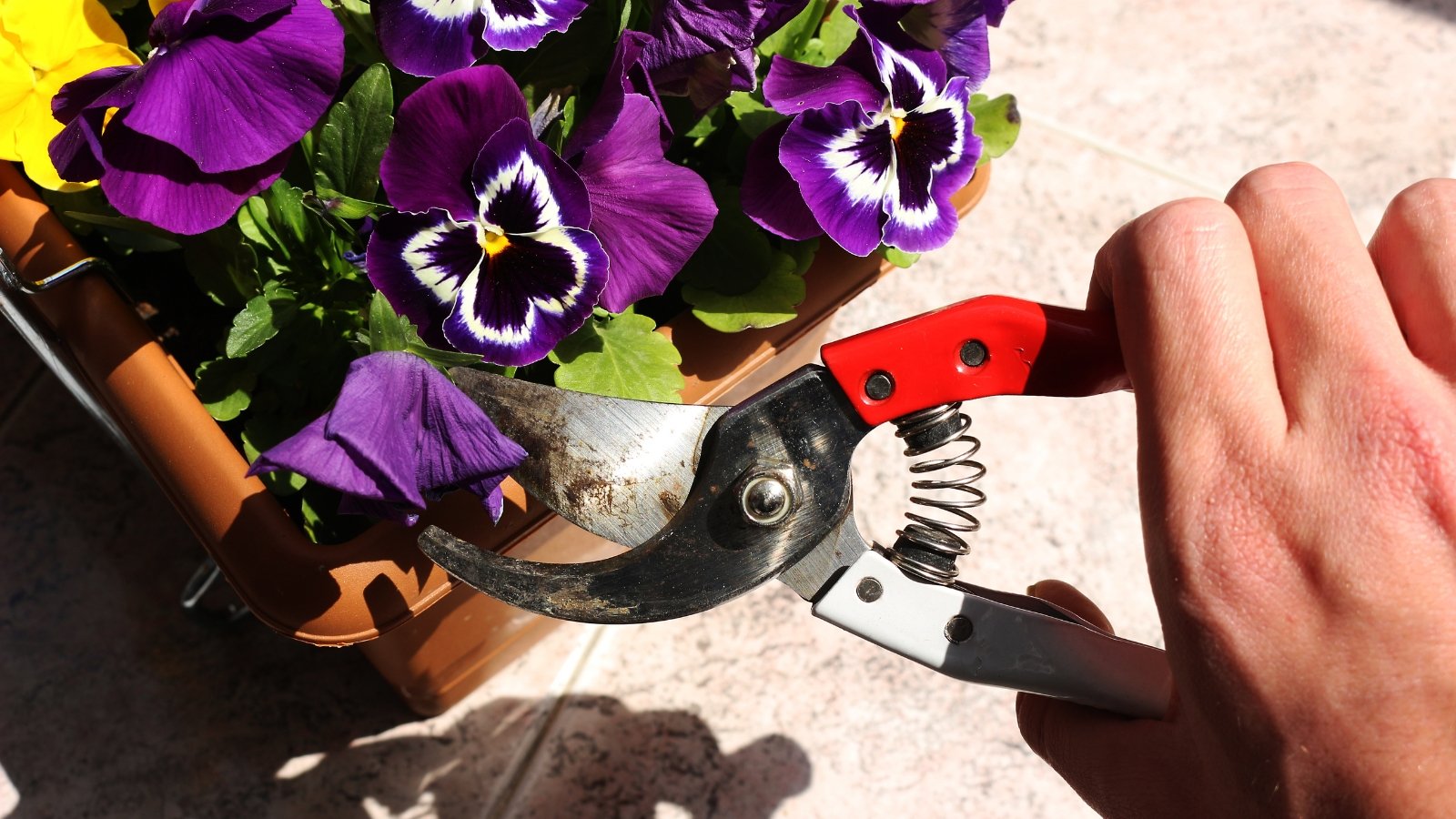Pansies are a favorite among cool-season flowers, known for their vibrant colors and impressive cold tolerance. To help these hardy plants survive winter and bloom beautifully in spring, here are some expert tips.
Pansies are not only delightful to look at but also add a sweet fragrance to the garden. These resilient plants can endure frost and cold temperatures, making them an excellent choice for early spring blooms. For gardeners in colder zones, overwintering pansies ensures a vibrant start to the growing season.
Understanding Hardiness Zones
Pansies thrive as annuals in all growing zones but are winter-hardy in Zones 4–10. With proper care, pansies in Zones 7–10 can even bloom during winter. In Zones 4–6, they may go dormant during harsh weather but can revive in spring with a bit of preparation.

A hybrid of violas, pansies come in a wide array of colors and have edible flowers with a mildly spicy flavor. They’re perfect for both culinary and ornamental use, adding charm to salads and baked goods. Let’s explore how to help your pansies thrive through the winter.
Step 1: Select Cold-Tolerant Varieties
Pansies are available in nearly every color, including rare true blue shades. Their blooms may be tricolored, bicolored, or solid, with petals that range from smooth to heavily ruffled. When selecting varieties, consider cold tolerance—blue, white, and yellow blooms tend to handle cold better than pink, red, or orange.

In Zones 6–11, you have the flexibility to choose any variety, as pansies can often bloom through winter with proper care. If you’re in Zones 4–5, prioritize hardier shades and experiment with different options to find what works best for your garden.
Step 2: Plant at the Right Time
Timing is crucial for overwintering success. In colder climates, plant pansies in late summer or early fall to give them time to establish strong roots before frost. In warmer zones, planting in late fall or early winter works best.
For optimal germination, the soil temperature should be between 45–65°F (7–18°C). Planting too early can result in weak seedlings, while planting too late may not give them enough time to establish before winter.

In cooler climates, the goal is to let the plants establish themselves, go dormant, and then bounce back in spring. In warmer zones, pansies can often continue blooming through winter, provided they have proper care and occasional protection.
Step 3: Pick the Perfect Spot
Location matters when overwintering pansies. These plants prefer full sun and perform best with abundant light. However, in warmer zones, too much afternoon sun can stress the plants.
In colder regions, choose a location that receives as much sunlight as possible. In warmer climates, aim for a spot with morning sun and some afternoon shade to protect pansies from intense heat.

Pansies thrive in rich, well-drained soil with a neutral to slightly acidic pH. Before planting, enrich the soil with compost or well-rotted manure to improve its structure and provide nutrients.
For an added boost, mix in a balanced fertilizer high in phosphorus to encourage strong roots and flowers. Avoid soils that are too dense or waterlogged, as these can lead to root rot. Pansies also perform beautifully in containers—just ensure the potting mix is well-draining and nutrient-rich.
By following these steps, you’ll give your pansies the best chance to survive the winter and bring cheerful blooms to your garden when the warmer months arrive.
Step 4: Keep Pansies Hydrated
Maintaining proper moisture levels is key to overwintering pansies successfully. If starting from seeds, ensure the soil remains moist during germination. For young or newly planted pansies, water daily until they establish, then gradually reduce watering to about once per week.

As the weather cools, adjust your watering routine so the soil dries slightly between waterings. This practice hardens the plants, enhancing their resilience to cold. Avoid letting the soil dry out completely, as this can stop flowering and reduce frost tolerance.
In colder regions, where pansies go dormant, stop watering entirely during dormancy. Watering dormant pansies may lead to root damage or rot. In milder climates with occasional freezes, keep the soil slightly moist to protect the plants. Dry soil makes pansies more vulnerable to frost damage.
Step 5: Protect Pansies From Cold
Pansies can thrive in frost and tolerate temperatures as low as the mid-20s°F (-4°C). However, prolonged exposure to colder conditions may turn their foliage gray and cause dormancy. At temperatures below 20°F (-7°C), they may die back completely.

To help insulate the soil and protect the roots, apply a layer of mulch or straw around your plants. This not only retains soil moisture but also provides added insulation, even in warmer zones.
Consider wind protection as well. Freezing winds can be harsh on pansies, so planting them near larger plants or in sheltered areas can reduce wind damage.
Step 6: Fertilize Wisely
Your fertilization approach should depend on your climate. In cooler regions, fertilize in late summer with a low-nitrogen formula to promote strong root growth. Avoid fertilizing during dormancy, as the plants won’t be actively growing.
In spring, when the plants emerge from dormancy, apply a balanced fertilizer or one higher in nitrogen to encourage robust growth. Adding phosphorus during this time can also enhance flowering.

For warm climates where pansies grow continuously, fertilize every two to three weeks. If you enriched the soil before planting, use a high-phosphorus formula. Otherwise, a balanced fertilizer works well to provide essential nutrients.
Step 7: Maintain and Prune
Once your pansies bloom, regular maintenance will ensure they continue producing flowers. Deadhead spent blooms by cutting the entire flower stalk at its base. This redirects the plant’s energy toward creating more flowers.
Check your pansies weekly for deadheading and any signs of legginess. If they start to grow sparse or leggy, trim them back by no more than one-third of their height. Cut just above a set of leaves to encourage fuller growth and more blooms.

With consistent care, your pansies will reward you with vibrant, long-lasting blooms throughout the cool season and into spring.
